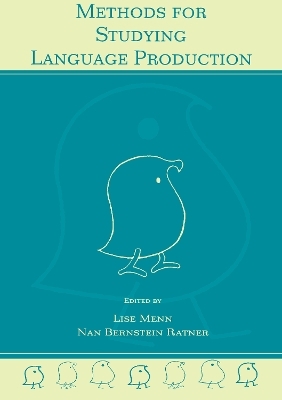
Methods for Studying Language Production
Psychology Press (Verlag)
978-0-8058-3033-0 (ISBN)
- Titel z.Zt. nicht lieferbar
- Versandkostenfrei
- Auch auf Rechnung
- Artikel merken
In this volume, which simultaneously honors the career contributions of Jean Berko Gleason and provides an overview of a broad and increasingly important research area, a panel of highly productive language researchers share and evaluate methods of eliciting and analyzing language production across the life span and in varying populations. Chapters address a wide variety of historical and evolving approaches to data collection for the study of morphosyntax, the lexicon, and pragmatics, both laboratory-based and naturalistic. Special concerns that arise in the study of atypical child development, aging, and second language acquisition are a focus of the discussion.
Lise Menn, Nan Bernstein Ratner
Contents: N.B. Ratner, L. Menn, In the Beginning Was the Wug: Forty Years of Language-Elicitation Studies. Part I:Eliciting Knowledge of Language.E.F. Masur, Infants' Verbal Imitation and Their Language Development: Controversies, Techniques, and Consequences. L. Gerken, Examining Young Children's Morphosyntactic Development Through Elicited Production. E.V. Clark, Coining New Words: Old and New Word Forms for New Meanings. R.A. Berman, Children's Innovative Verbs Versus Nouns: Structured Elicitations and Spontaneous Coinages. J. Gropen, Methods for Studying the Production of Argument Structure in Children and Adults. K.E. Nelson, Methods for Stimulating and Measuring Lexical and Syntactic Advances: Why Fiffins and Lobsters Can Tag Along With Other Recast Friends. C. Doughty, M.H. Long, Eliciting Second Language Speech Data. Part II:Gathering Production Data in Naturalistic Settings.C.E. Johnson, What You See Is What You Get: The Importance of Transcription for Interpreting Children's Morphosyntactic Development. B.A. Pan, R.Y. Perlmann, C.E. Snow, Food for Thought: Dinner Table as a Context for Observing Parent-Child Discourse. E. Andersen, Exploring Register Knowledge: The Value of "Controlled Improvisation." R. Ely, A. Wolf, A. McCabe, G. Melzi, The Story Behind the Story: Gathering Narrative Data From Children. S. Ervin-Tripp, Studying Conversation: How to Get Natural Peer Interaction. Part III:Developmental Disorders.N.B. Ratner, Elicited Imitation and Other Methods for the Analysis of Trade-Offs Between Speech and Language Skills in Children. H. Tager-Flusberg, The Challenge of Studying Language Development in Children With Autism. L.B. Leonard, Understanding Grammatical Deficits in Children With Specific Language Impairment: The Evaluation of Productivity. M.L. Donahue, Influences of School-Age Children's Beliefs and Goals on Their Elicited Pragmatic Performance: Lessons Learned From Kissing the Blarney Stone. Part IV:Adult Disorders.H. Goodglass, Jean Berko Gleason's Contributions to Aphasia Research: Pioneering Elicitation Techniques. L. Menn, Studying the Pragmatic Microstructure of Aphasic and Normal Speech: An Experimental Approach. L.K. Obler, S. De Santi, Eliciting Language From Patients With Alzheimer's Disease.
| Erscheint lt. Verlag | 12.11.1999 |
|---|---|
| Verlagsort | Philadelphia |
| Sprache | englisch |
| Maße | 152 x 229 mm |
| Gewicht | 861 g |
| Themenwelt | Geisteswissenschaften ► Sprach- / Literaturwissenschaft ► Sprachwissenschaft |
| ISBN-10 | 0-8058-3033-2 / 0805830332 |
| ISBN-13 | 978-0-8058-3033-0 / 9780805830330 |
| Zustand | Neuware |
| Haben Sie eine Frage zum Produkt? |
aus dem Bereich


